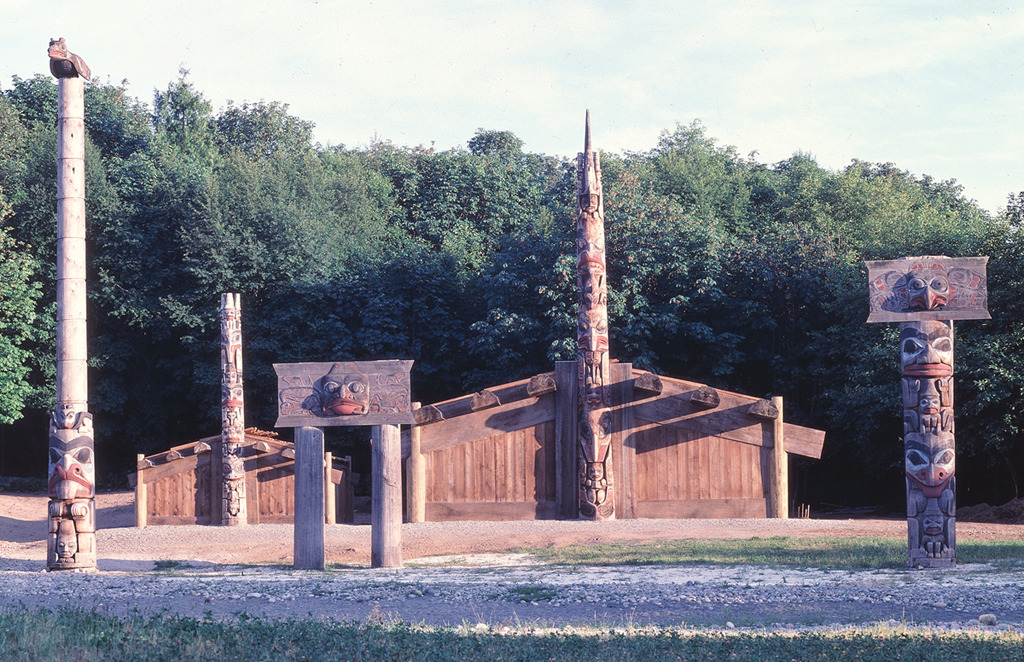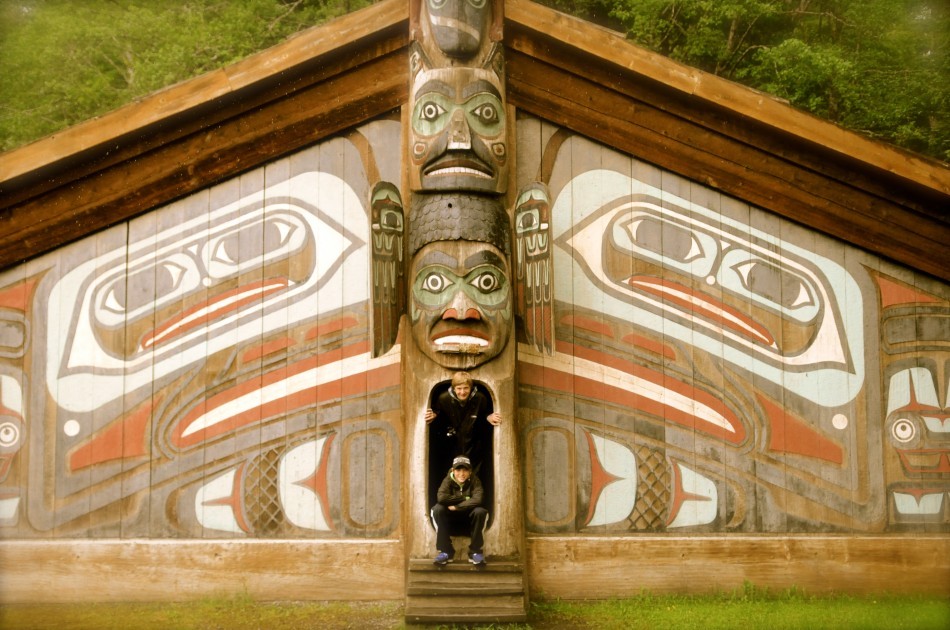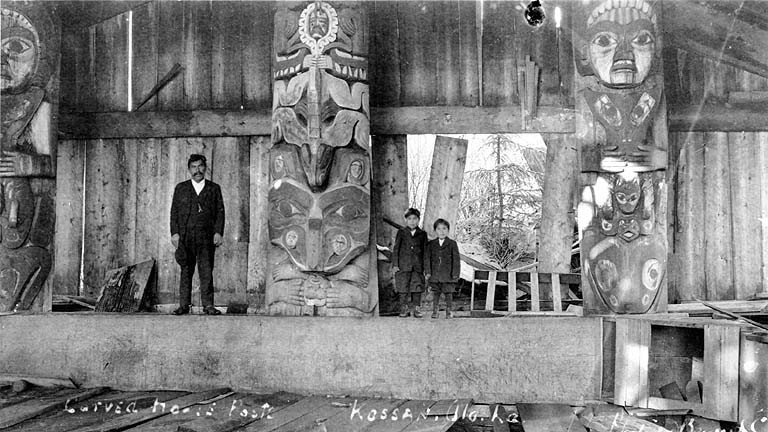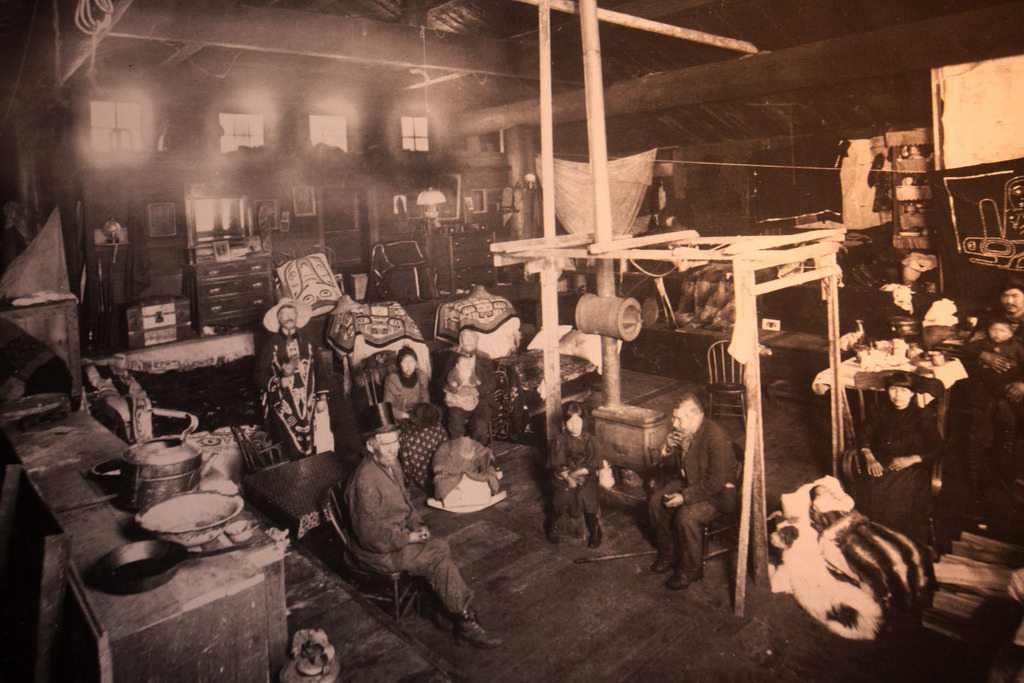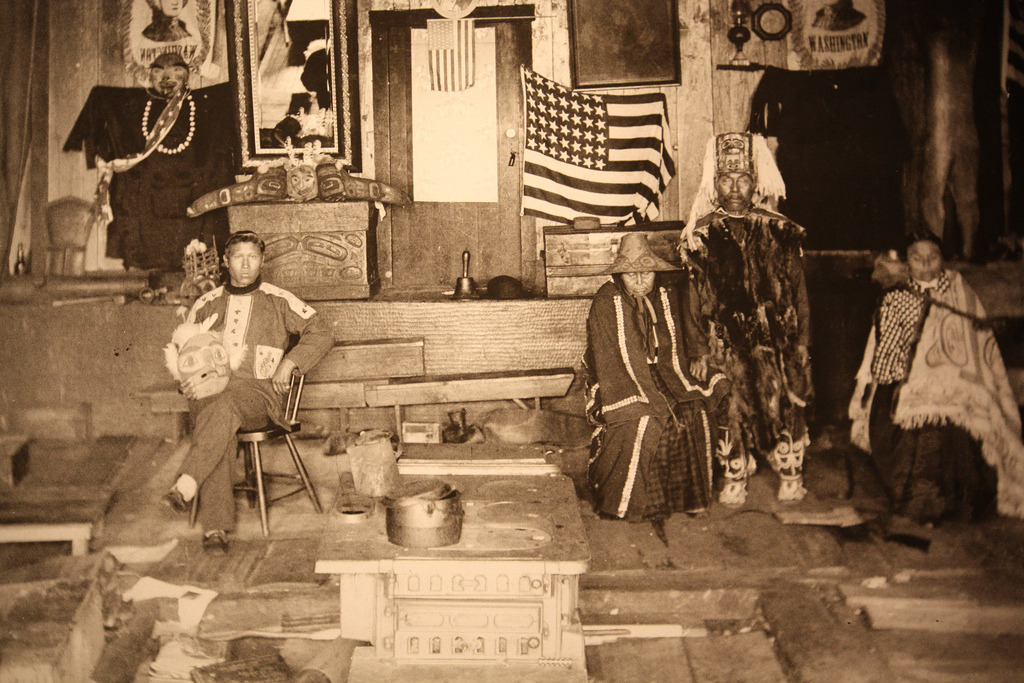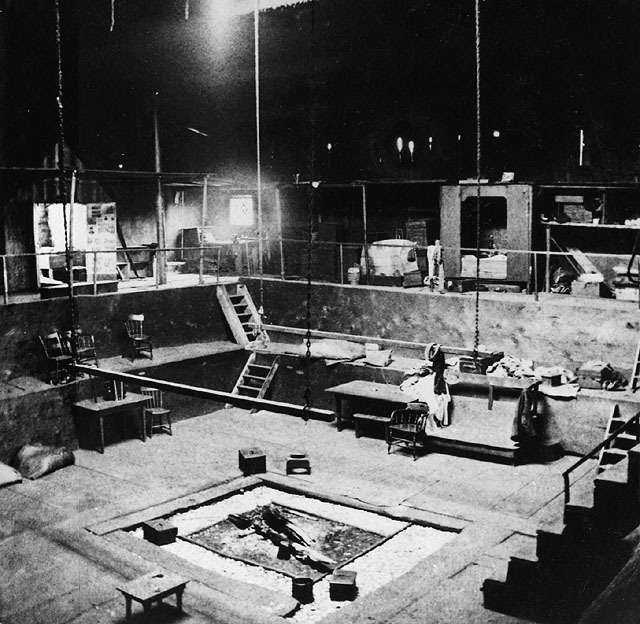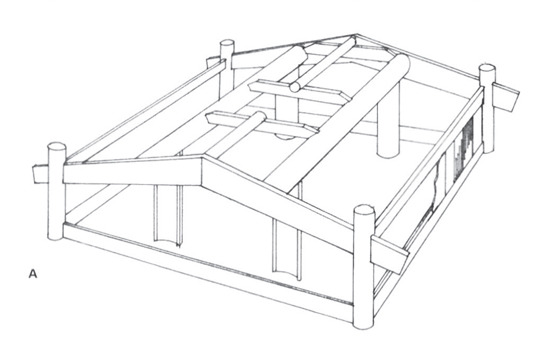V 01 |
Haida longhouse |
type |
|
place |
|
population |
The haida, similarly to the tlingit, nuxalk, and the kwakwaka’wakw (better known as the kwakiutl) are Northwest coastal Indians, famous as fishermen, whalers and fearsome warriors. Their 16-18 metre long war canoes are carved from a single tree trunk, as is their wooden “armour”: helmets, visors and breastplates.
The wood of the Thuja platica tree (Western Red Cedar) which they used for boatbuilding is lightweight and strong, splits well and does not rot. Its twigs are flexible enough to be used as rope, and its bark can be made into blankets and clothing. The Haida’s houses were also made of this wood, worked with stone and horn edged axes and chisels, wooden mallets and shark skin used for sanding.
When a house was finished a painted and carved totem pole was erected outside indicating the origins and importance of the family. This was connected to the largest Haida festival, the potlach, when the tribe organized a huge feast. The family showed off its wealth, bestowing gifts on hundreds of people as well as making burnt offerings (including furs and canoes), a tradition which continued until the Canadian government showed its displeasure about the practice by banning it in 1885.
There were two quite similar types of house, with roughly square floor plan and 12-18 metre high gabled roofs. An average 15×15 metre house was inhabited by 30-40 people, while larger buildings could housed many times more. An area in the middle of the interior was sunken and used for cooking and eating. A fire was always kept burning with the smoke escaping from a square opening in the roof. Around the pit were sleeping places and store rooms at ground level. The entrance was through a doorway carved in the totem pole.
